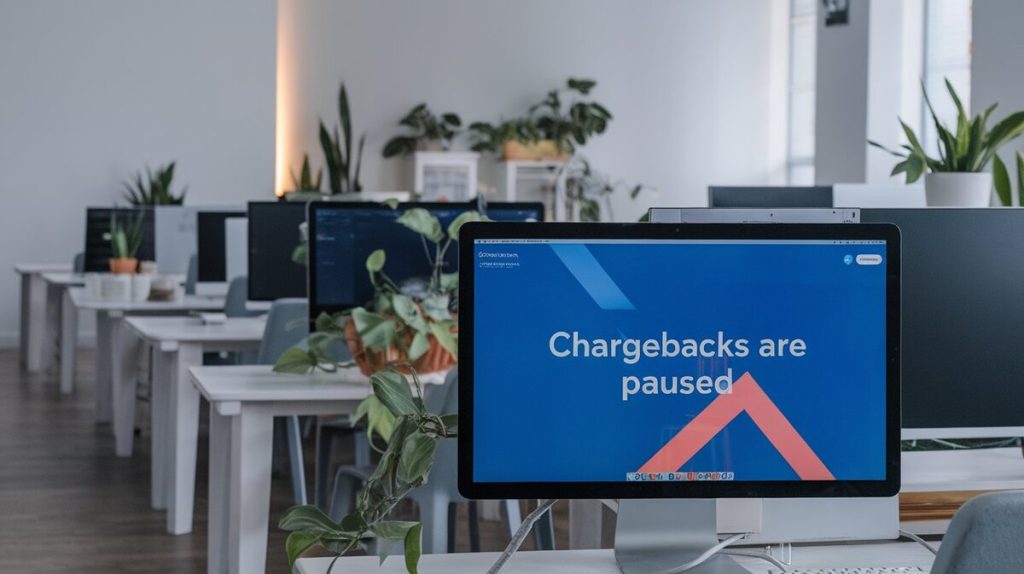Introduction
Stripe is a leading payment processing platform used by millions of businesses. Occasionally, users experience paused charges or payouts, which can disrupt business operations. This article explains the causes of paused payments, how to resolve them, and steps to prevent future occurrences. It also highlights effective chargeback prevention solutions in chargeback management.
Section 1: What Are Paused Charges or Payouts?
Paused charges and payouts impact the ability to process payments and transfer funds. A paused charge means transactions cannot be processed until specific issues are resolved, while paused payouts allow businesses to receive payments but block fund transfers to bank accounts.
Key Definitions:
- Paused Charges: Stripe prevents the creation of any charges, blocking payment collection.
- Paused Payouts: Funds collected remain in the Stripe account but cannot be transferred to external bank accounts until the pause is lifted.
Section 2: Reasons for Paused Charges or Payouts
There are several common reasons for Stripe to pause charges or payouts:
- Negative Balance: If a Stripe account has a negative balance, future payouts may be paused until the balance is restored.
- Fraud Detection: Stripe’s machine learning system, Stripe Radar, detects fraudulent or risky transactions. High-risk transactions may result in pauses. In 2023, global payment fraud losses were estimated at $32 billion, driving the need for fraud detection systems.
- Missing Tax Information: Stripe requires tax forms such as W-8/W-9 for compliance. Missing or outdated documents may lead to a pause.
- Unusual Activity: A sudden increase in transaction volume or unusual payment patterns may trigger risk alerts.
Table 1: Common Causes of Paused Payouts
| Reason | Percentage of Pauses | Resolution Time (Days) |
|---|---|---|
| Negative Balance | 35% | 1-3 days |
| Fraud Detection (High Risk) | 25% | Up to 14 days |
| Missing Tax Documents | 20% | 1-2 days |
| Unusual Transaction Activity | 15% | Case-by-case |
| Other Issues (Technical Errors) | 5% | 1 day |

Section 3: Resolving Paused Charges or Payouts
Resolving paused charges or payouts involves specific steps, depending on the cause:
1. Submit Required Information: If payouts are paused due to missing tax or business details, updating the information via Stripe Dashboard usually resumes payouts within 1-2 business days.
2. Fix Negative Balance: Stripe automatically withdraws funds from your connected bank account if your balance is negative. This process can take 3-5 days.
3. Address Fraud Flags: When Stripe detects fraudulent transactions, payouts are paused for up to 14 days. Review flagged transactions in Stripe Radar, verify legitimate ones, and take appropriate action.
4. Optimize Payout Schedule: Adjusting payout schedules can prevent pauses. For example, switching from daily to weekly payouts can provide time to resolve issues.
Table 2: Resolution Times for Paused Payouts
| Issue | Average Resolution Time | Recommended Action |
|---|---|---|
| Missing Information | 1-2 days | Submit required tax forms |
| Negative Balance | 3-5 days | Ensure positive balance |
| Fraud Detection | Up to 14 days | Review flagged transactions |
| Unusual Activity | Case-by-case | Contact Stripe support |
Section 4: Preventing Paused Charges and Payouts
To prevent paused charges or payouts, businesses should adopt the following strategies:
- Keep Account Information Updated: Ensure that tax documents and business details are regularly updated to prevent compliance-related pauses.
- Maintain a Positive Balance: Having a positive balance in your Stripe account helps avoid pauses related to insufficient funds. Consider keeping a reserve equal to 10% of your monthly revenue to cover unexpected chargebacks.
- Use Fraud Detection Tools: Implementing fraud detection systems such as Stripe Radar can reduce the chance of fraudulent transactions causing paused payouts. For chargeback prevention, Merchanto.org, an official partner of VISA and MasterCard, provides comprehensive solutions. Businesses can benefit from real-time chargeback alerts and risk management services. For more information, visit Merchanto.org.
- Adjust Payout Frequency: Consider changing payout schedules from daily to weekly or bi-weekly to provide a buffer period for addressing potential issues before they lead to payout pauses.
Table 3: Best Practices for Preventing Paused Payouts
| Preventative Measure | Impact on Payout Stability | Recommended Action |
|---|---|---|
| Update Tax Documents | High | Review documents quarterly |
| Maintain Positive Balance | High | Keep a buffer of 10% of monthly revenue |
| Use Fraud Detection Tools | Medium | Implement Stripe Radar |
| Optimize Payout Schedule | High | Switch to weekly payouts |

Section 5: Industry Data and Benchmarks
Payment Processing Statistics:
- Stripe processed $640 billion in transactions in 2022, with approximately 5% experiencing payout delays due to various issues.
- Fraud-related paused payouts account for 25% of delays, emphasizing the importance of using robust fraud detection tools.
- In 2023, $32 billion was lost globally due to payment fraud, illustrating the growing need for payment processors to implement strong fraud prevention measures.
Chargebacks, a significant risk factor for paused payments, are increasing. On average, eCommerce businesses face a 0.6% chargeback rate, with many exceeding this threshold, leading to paused payouts. If the chargeback ratio exceeds 1%, it could result in account restrictions or termination from payment networks like VISA and MasterCard.
Conclusion
Paused charges and payouts are preventable and manageable. Ensuring updated tax information, maintaining a positive balance, and using fraud detection systems like Stripe Radar will significantly reduce the likelihood of disruptions. Furthermore, collaborating with trusted partners like Merchanto.org can help mitigate chargeback risks, ensuring smooth payment processing and consistent cash flow.
By following these steps, businesses can avoid paused payouts and continue operating efficiently.



